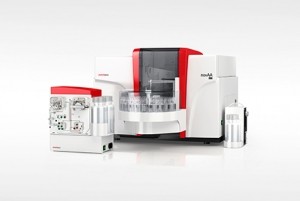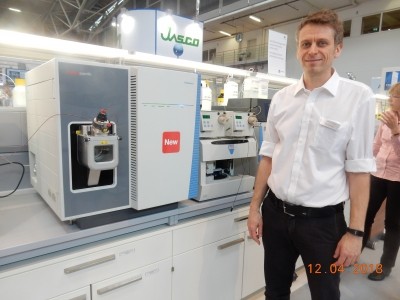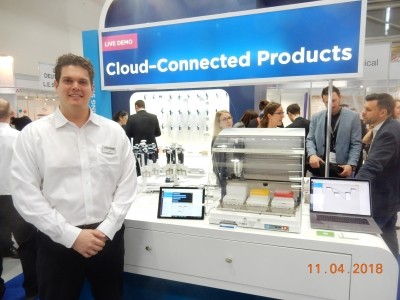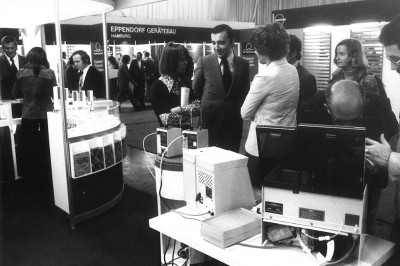dispatches from Analytica 2018
Analytik Jena targets efficient routine analysis
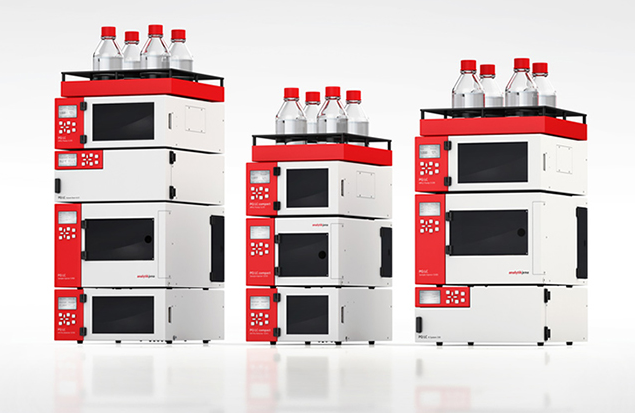
At Analytica 2018, the company launched an HPLC module for its PlasmaQuant MS mass spectrometer series.
In the food industry the combination of PlasmaQuant MS and PQ LC simplifies the detection of toxic and non-toxic element species. Detection limits are in the sub parts per trillion (ng/L) range.
LC-ICP-MS makes determination of elemental species possible for analysis of fish, rice, chocolate and apple juice for arsenic, selenium or chromium.
Versions of the PQ LC
There are three versions of the PQ LC modules: The compact PQ LC for routine applications in small lab environments, the standard version for routine and special applications and the PQ IC ion chromatography system.
Upgrade options include temperature control for the sample injector, column oven or UV/Vis detector.
Individual adaptations to customer requirements and retrofitting of existing PQ LC modules are possible.
Ulrich Krauss, CEO of Analytik Jena, said the firm has combined its PQ LC with the PlasmaQuant MS.
“By separating various species of an element using HPLC, the mass spectrometer can deliver even more precise results. Not only is this interesting for special analyses, but it makes an entire series of routine analyses more efficient, quicker, and more accurate. And does so without requiring more work by the laboratories.”
AAS for routine labs
Analytik Jena also unveiled an Atomic Absorption Spectrometer (AAS) at the trade fair in Munich as entry-level instrumentation for routine laboratories.
Instrument design with flame, graphite furnace and hydride technologies on one platform boosts user analytical capabilities.
The novAA 800 is designed to meet the demands of industrial process labs - in the food, environmental or chemical industries - where moderate sample quantities have to be analyzed cost-effectively and reliably.
In the food industry, bulk elements - such as calcium, iron and zinc - are typically analyzed by flame technique; while traces - such as arsenic or mercury - can be analyzed by graphite furnace or hydride technology.
Ability to change the atomizer allows use by labs that measure high and low-concentration ranges.
The novAA 800 is in three variations: the novAA 800 with flame and hydride technology; the novAA 800 G with graphite furnace and hydride technology and the novAA 800 D, which integrates all three technologies in one system.
Together with the contrAA and ZEEnit series, the novAA 800 series completes Analytik Jena's AAS portfolio.
Kruass said it is an entry-level AAS for routine labs.
“It is our range of accessories in particular that benefit the AAS technology in terms of flexibility and performance. Thanks to these improvements, the AAS technology is now ready for today’s industry labs. Besides, costs per sample and for training applications, among other things are reduced significantly by the novAA series.”
